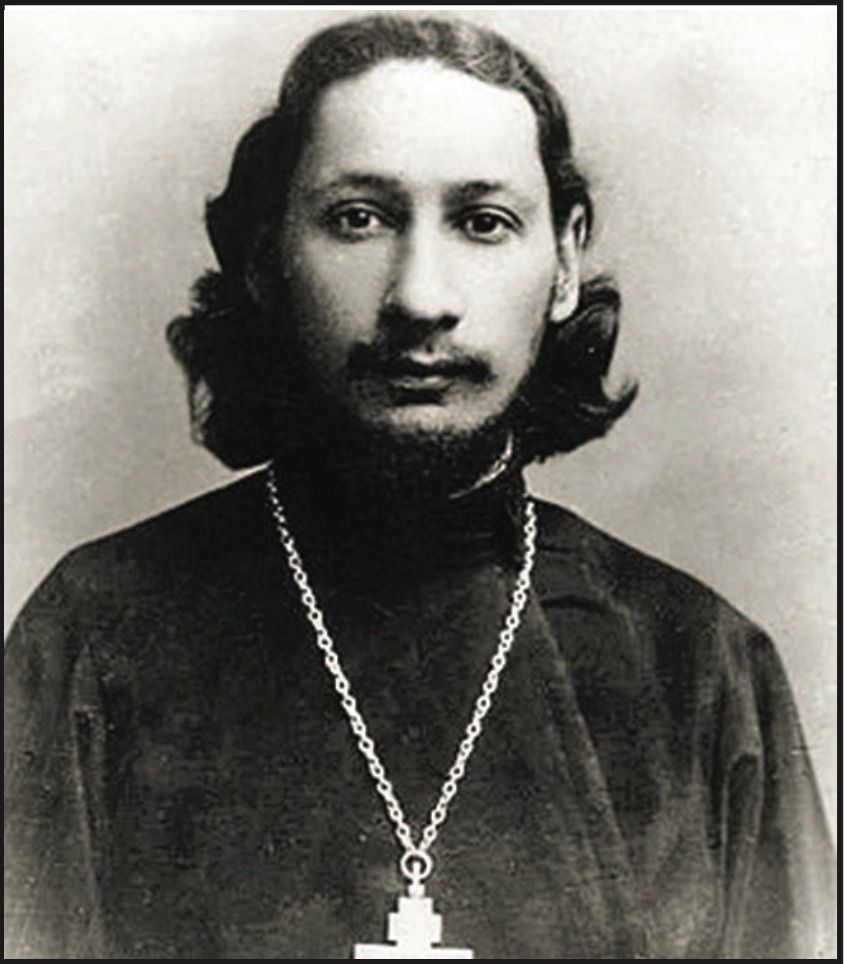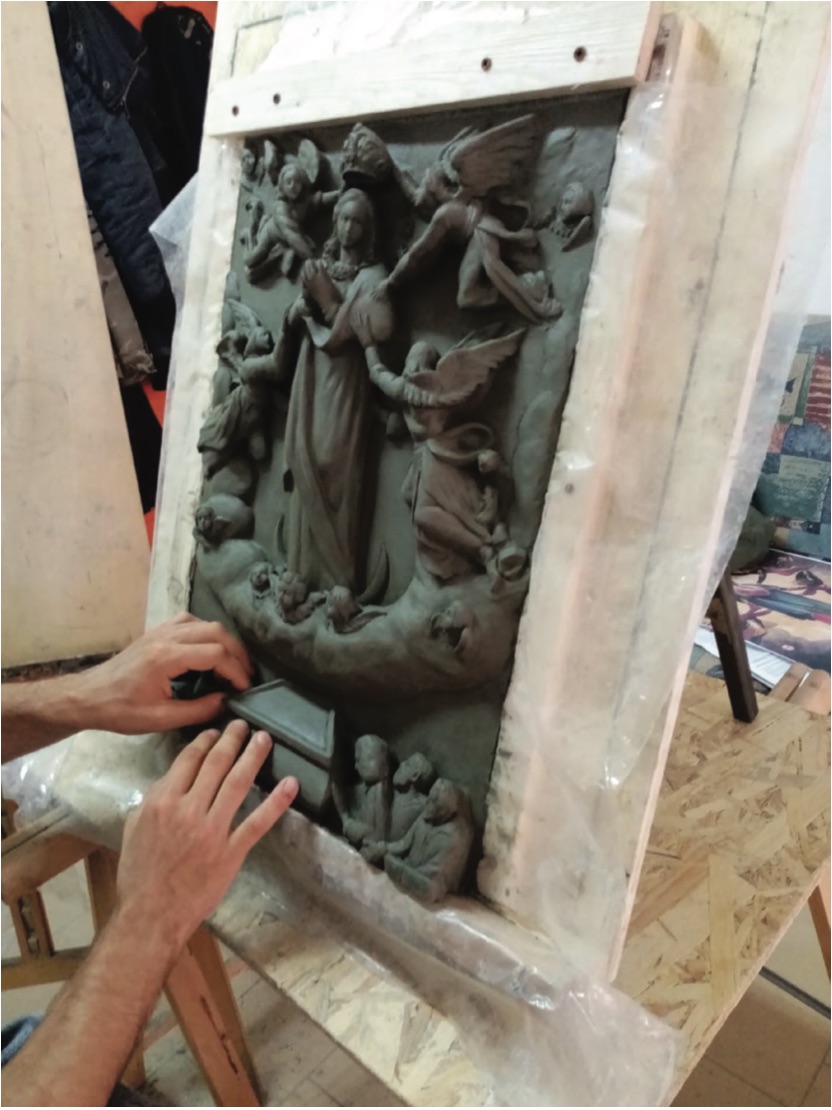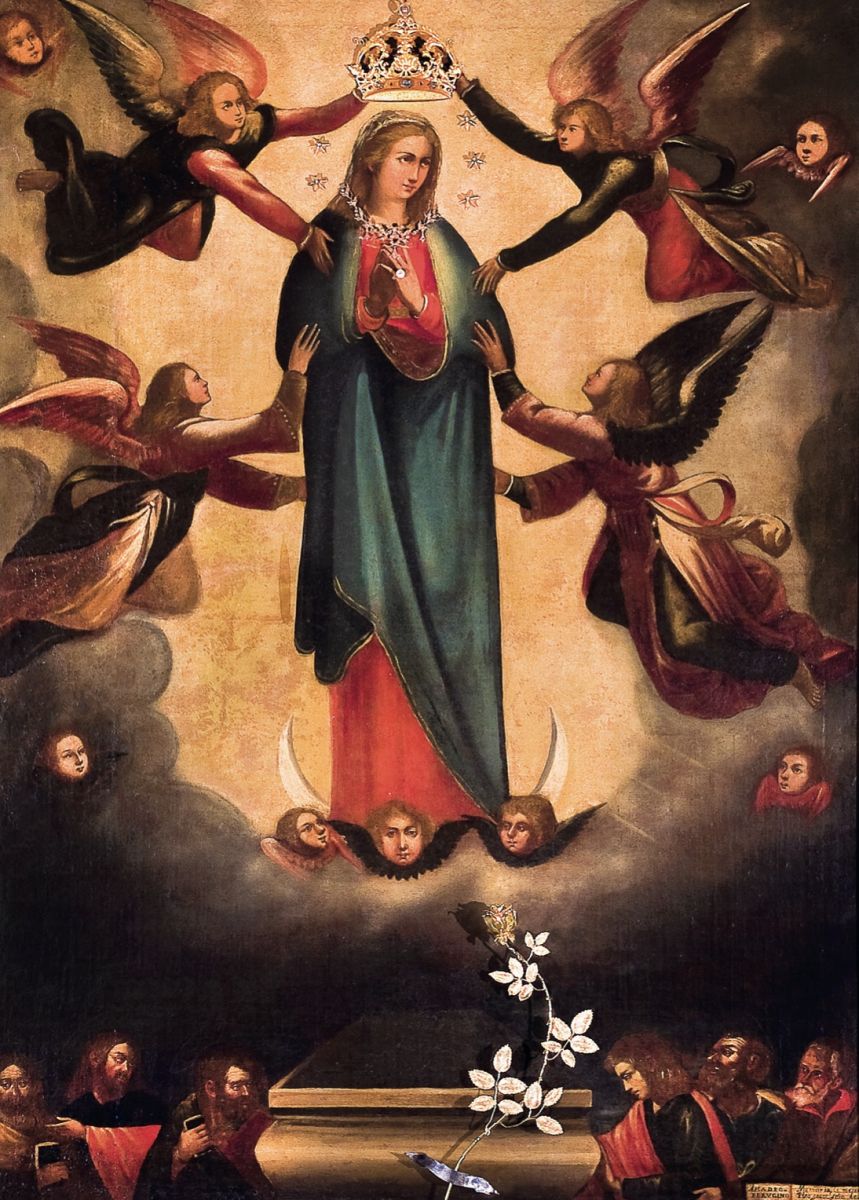The Royal Doors, Essay on the Icon, written in 1922 by the Russian philosopher, theologian, priest, mathematician and inventor Pavel Aleksandrovic Florenskij, clarifies with masterly synthesis how the icon is the limen between material and supernatural world. Likewise, the theologian and philosopher Pavel Nikolaevic Evdokimov defines the icon as an experiential divine substance, in which the transcendent breaks into force the limit of semblance and expands. These words are demanding and enigmatic for a Westerner who is faced with incarnated metaphysics. The icon is a metaphysics of the image and light, mysterious in the eyes of those who do not know the liturgy of the Oriental Church. Indeed, the incompatibility of the concept of painting seems evident, as it has evolved in the West, with the cosmogony described by Florenskij. The Russian priest and physicist wrote that “the two worlds - the visible and the invisible - are in contact" and that "the difference between them is so great that exist the problem of the limits connecting them, that distinguish them but also unite them." If the earthly experience is a symbol of spiritual life, this happens because of the role of the dream, in the passage between the face and the mask, between appearances and essences. Here Florenskij gradually comes near to define the authentic meaning of icons: “The face and the spiritual aspects of things are visible to those who have seen in themselves their primal face, the image of God: The Idea. In this sense, the icon would always be recognized "as an expression drawing on the divine plan."

Whether it is the sum or the lack of mastery, at its basis lies the authentic perception of an unearthly spiritual experience." The world of icon painting, which Florenskij reveals to us in his essay, would forever remain incomprehensible if approached with the usual tools of art criticism. Exempt from perspective, incompatible with the conception of dominant painting in the West, from the Renaissance onwards, the icon transcends space and time. Florenskij introduces us to metaphysics with very acute historical analyzes, ranging from Flemish painting to the techniques of colour preparation, from the geometry of drapery to the transfiguring force, a seventeenth-century painting by Italian painter Amedeo Perugino, exhibited in Gozo's Ta 'Pinu Sanctuary, in Malta, is considered as a miraculous western icon, and was made accessible to people living with vision loss, thanks to Father Gerard Buhagiar, with the same precautions as a Greek Orthodox icon.
Iconographically, the works of art, considered as finding its roots in thaumaturgy, depicts a Vergine Assunta who, in 1883, is said to have miraculously spoken to pilgrims, a sign of graces received. The perspective bas relief was done in the tactile museum Anteros. The prototype was modelled in clay, creating contours and volumes as perceived in the painting, and translatable into touch for the understanding of the functional shape by people living with vision loss. The plastic translation of the painting was presented at the Ta 'Pinu Sanctuary on the morning of November 30th, in the presence of the Bishop of Gozo, as part of a moving ceremony strong in intensity and truth of faith. The image in relief, as a reflection of the thaumaturgical work, was blessed and carried in procession inside the Sanctuary's presbytery, to be touched by some blind worshippers. In this case, the ideal cultural nature of the theological icon, merging with its devotional function, has allowed us to see the idea in an essence rendered as a perceptible substance. What stirred sincere emotions was to perceive how a mystical content could translate itself into the physical nature of the image and return as a pure idea, in the mind of blind worshippers who have the advantage of understanding the depth, transcendence and subtlety of the world of symbolic images.

In 1933, Pavel A. Florenskij was accused of counterrevolutionary activities, sentenced to forced labour, and imprisoned in a gulag. He continued to write and to patent inventions. He was executed on December 8, 1937, near Leningrad. His last writing, "Don't forget me" is an epistolary of humanity and dignity. At one point it reads: "Incarnation is the fundamental precept of life, it is to realize one's potential in the world and to create the matter of self. Only with Incarnation can the truth and the value of oneself be measured, otherwise the objective criticism of oneself is not possible." So, we believe.


.jpg)



.png)